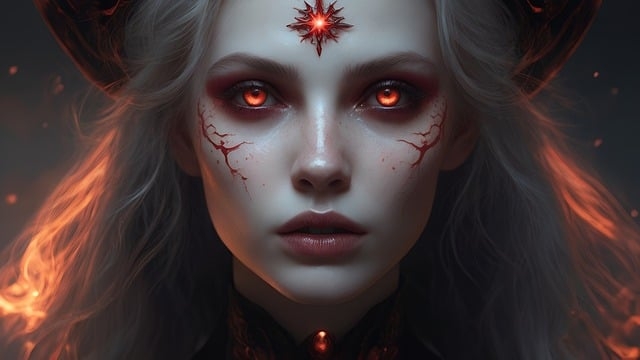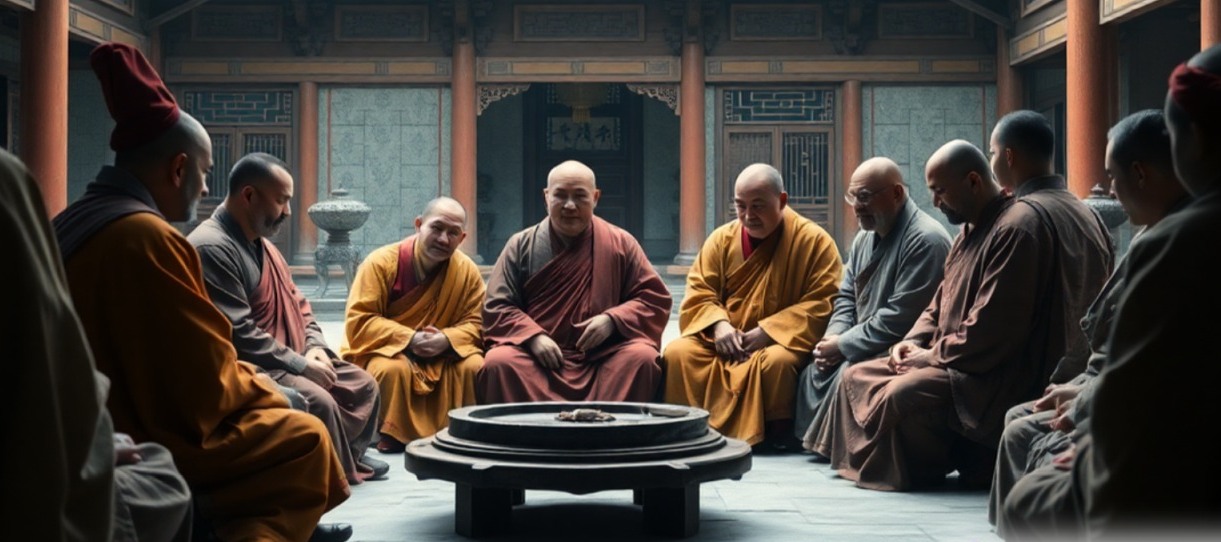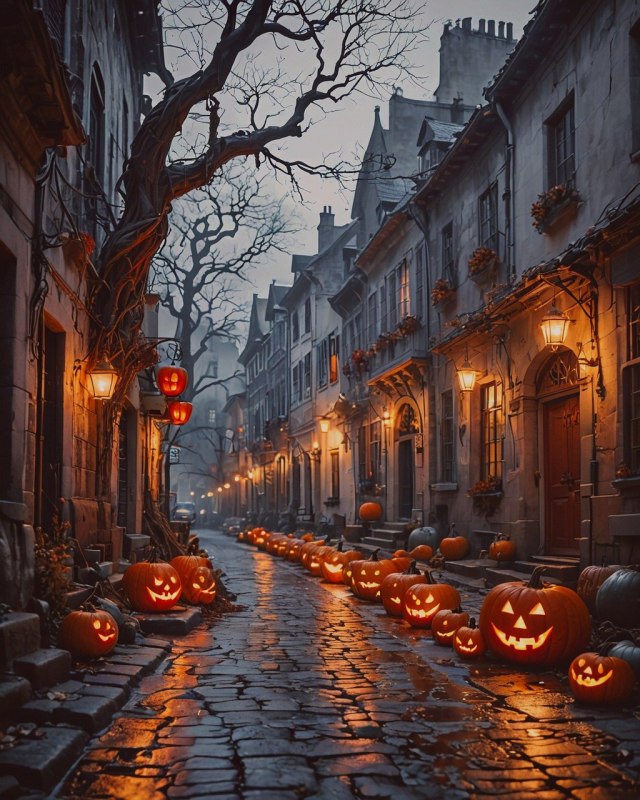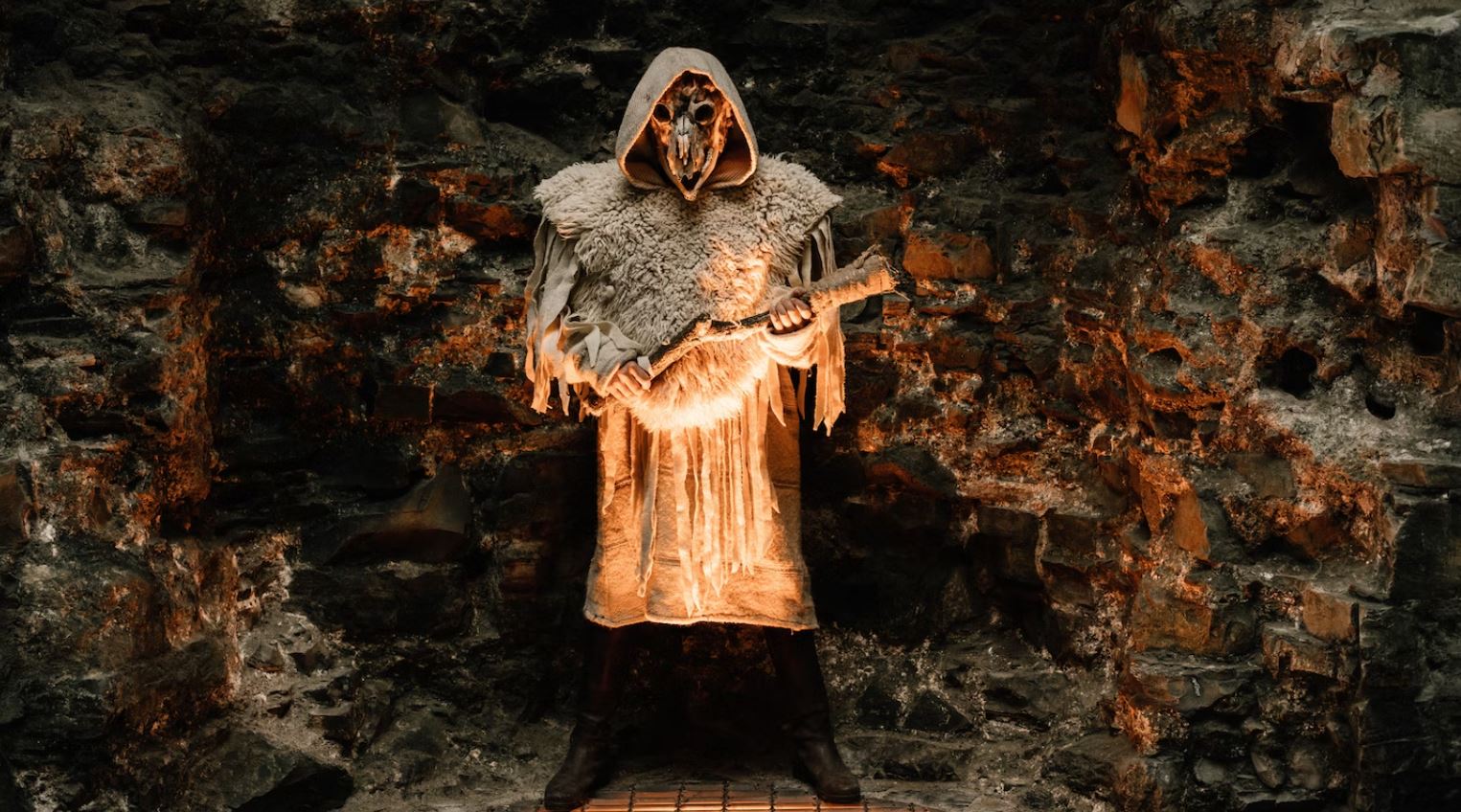
The Irish Puka Festival: A Mystical Celebration of Celtic Folklore
Nestled within the enchanting landscapes of Ireland, a unique and mystical festival known as the Irish Puka Festival takes center stage, drawing attendees into a world of ancient Celtic folklore and supernatural tales. The extraordinary event showcases the rich tapestry of Irish mythology, captivating the imagination of both locals and visitors alike. With its roots deeply embedded in history, this occult Festival has evolved into a vibrant celebration that pays homage to the country’s cultural heritage while providing an unforgettable experience for all who participate.
Unveiling the Puka: Origins and Significance
The Puka, also spelled “Púca,” is a mythical creature of Irish folklore, often depicted as a mischievous shapeshifter with the ability to transform into various animals. While its nature varies from being a helpful or benign presence to a more malevolent trickster, the spirit creature’s role in Celtic mythology is crucial. It embodies the essence of Ireland’s natural world, bridging the gap between the ordinary and the supernatural.
The mysterious Irish Festival finds its roots in these mystical tales. Believed to have originated in the early medieval period, the festival has grown from a localized event to a national celebration that unites people from all walks of life. Its significance lies in the preservation of Irish heritage, the revival of ancient traditions, and the fostering of a sense of community among attendees.
Timeless Traditions: Celebrating the Otherworldly
The Puka RItes typically takes place during the autumn equinox, a time of transition when the natural world undergoes profound changes. This timing is no coincidence, as it aligns with the Celtic belief in the thinning of the veil between the mortal realm and the Otherworld—a parallel universe inhabited by mythical creatures and spirits.
One of the festival’s central traditions is the creation of intricate masks and costumes that embody the spirit of the Puka. Attendees participate in workshops and crafting sessions, learning to craft masks that represent the shapeshifting nature of the creature. The masks often incorporate elements of animals like horses, goats, and birds, reflecting the spirit entity’s ability to transform into these forms. This artistic endeavor not only allows participants to engage with their creative side but also connects them to the ancient craftsmanship of their ancestors.
Enchanted Gatherings: Music, Dance, and Storytelling
At the heart of the Irish Puka Festival is the celebration of Irish culture through music, dance, and storytelling. Traditional Celtic music fills the air, transporting attendees to a bygone era. Musicians wielding fiddles, flutes, and bodhráns create an ambiance that resonates with the folklore of old.
Dance holds a special place in the festivities, with energetic jigs and reels invoking the spirit of the Puka. Attendees join hands in traditional ceili dances, forming a vibrant circle that embodies unity and community. These dances hark back to ancient rituals where communities would come together to celebrate, share stories, and forge connections.
Storytelling is perhaps the most cherished aspect of the festival. Elders and seasoned storytellers regale the audience with captivating tales of the Puka, recounting encounters with the mischievous creature and other mythical beings. These narratives are not mere entertainment but a continuation of the oral tradition that has preserved Irish history and culture for generations.
Mystical Arts and Crafts: Reviving Ancient Skills
The Irish Spirit Being Festival offers attendees the opportunity to engage with various arts and crafts deeply rooted in Ireland’s history. Workshops on traditional practices such as blacksmithing, pottery, and weaving provide a hands-on experience that connects modern participants with the skills of their ancestors.
Blacksmithing workshops, in particular, demonstrate the close relationship between the Puka and the natural world. Participants learn the art of forging iron and creating tools, drawing inspiration from the tales of the spirit being’s affinity for metalwork. These workshops emphasize the sustainability and resourcefulness inherent in Celtic culture, fostering a sense of reverence for the environment.
Culinary Delights: Feasting with the Puka
No festival is complete without an array of delectable treats, and the Puka Celebration is no exception. Traditional Irish cuisine takes center stage, with dishes inspired by the bounties of the land and the sea. Attendees indulge in hearty stews, freshly baked bread, and succulent seafood, all prepared using time-honored recipes.
A unique aspect of the festival is the “Puka’s Feast,” a grand communal meal where attendees gather around a long table adorned with autumnal decorations. This feast not only fills stomachs but also serves as a metaphorical feast of community and shared heritage.
Connecting Generations: Passing Down the Puka’s Legacy
One of the most heartwarming elements of the Irish Puka Festival is its ability to bring together multiple generations. Grandparents share tales of the Puka with wide-eyed grandchildren, passing down cherished stories from their own youth. This intergenerational exchange strengthens family bonds and ensures the continuity of cultural traditions.
The festival also provides a platform for young artists and musicians to showcase their talents. Through poetry readings, music performances, and art exhibitions, the younger generation contributes to the evolving narrative of the Puka while infusing it with contemporary creativity.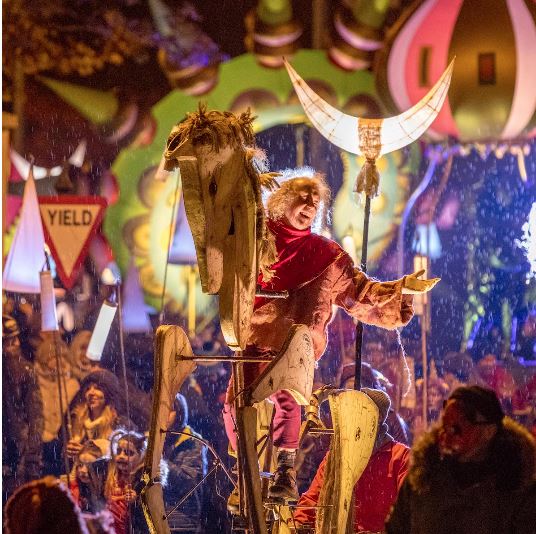
Environmental Awareness: Honoring Nature and Tradition
In a world grappling with environmental challenges, the Puka Festival takes on a new dimension. With its strong ties to the natural world, the festival promotes environmental awareness and sustainability. Workshops and discussions centered around traditional ecological knowledge underscore the importance of preserving the delicate balance between humanity and nature.
Incorporating practices such as herbal medicine workshops and foraging expeditions, the Puka Festival encourages attendees to reconnect with the land and its resources. This serves as a reminder of the symbiotic relationship that has existed between humans and the environment for centuries.
The Puka Festival: A Path to Preservation
The Irish Puka Festival is more than a mere celebration; it’s a bridge connecting the past, present, and future. By honoring the legacy of the Puka and embracing the customs of their ancestors, participants contribute to the preservation of Ireland’s cultural heritage. As globalization and modernization continue to reshape societies, festivals like these become sanctuaries of tradition, fostering a sense of identity and belonging.
In a world that often rushes forward, the Puka Festival invites attendees to pause, reflect, and immerse themselves in the enchanting world of Irish mythology. Through art, music, dance, and storytelling, people from all corners of the globe come together to celebrate the threads that weave us into the rich tapestry of humanity’s shared history. The Irish Puka Festival stands as a testament to the enduring power of folklore and the profound impact it can have on fostering understanding, unity, and appreciation for the diverse cultures that shape our wo
Appearance and Mystical Powers of the Puka: A Glimpse into Celtic Folklore
In the realm of Celtic mythology, the Puka emerges as a captivating and enigmatic creature, embodying the intricate connection between the natural world and the supernatural. As a shapeshifter of Irish folklore, the Puka’s appearance varies widely, as does its nature and intentions. This elusive being is known to take on diverse forms, from a benign and helpful presence to a mischievous trickster with a penchant for pranks. Its magical powers, deeply rooted in the tapestry of Celtic tradition, add an air of mystery and wonder to the stories and legends that have captivated generations.
Chameleon of Form: The Ever-Changing Visage
Central to the allure of the Puka is its ability to transform its appearance at will. This shape-shifting quality allows the Puka to take on the form of various animals, seamlessly blending into the natural world. It is said that the Puka can appear as a horse, a goat, a hare, or even a bird, adopting the characteristics and abilities of each form it assumes. This chameleon-like quality not only makes the Puka difficult to detect but also highlights its connection to the Earth’s creatures.
The Puka’s appearance, while diverse, often carries an air of the otherworldly. In equine form, the Puka may manifest with wild eyes that gleam like moonlit orbs, and its coat might shimmer with a faint luminescence, hinting at its ethereal nature. When assuming the guise of a goat, the Puka’s horns are said to curve with an almost magical elegance, reflecting its affinity for the realm of enchantment.
Emissary of Change: The Puka’s Magical Powers
The Puka’s supernatural abilities extend beyond its shapeshifting prowess, encompassing a range of magical powers that add layers of intrigue to its character. These powers are often attributed to its role as a guardian of the thinning veil between the mortal world and the Otherworld—an alternate realm inhabited by mystical beings and spirits.
- Weather Manipulation: The Puka is believed to hold sway over the weather, particularly on misty and mysterious nights. It can conjure storms, shape the direction of winds, and influence atmospheric conditions. This power underscores the Puka’s role as a bridge between the natural and supernatural worlds, as well as its ability to wield the elements to its advantage.
- Time Distortion: Time itself is subject to the Puka’s influence. Stories speak of travelers encountering the Puka and experiencing time dilation—minutes stretching into hours or hours passing in the blink of an eye. This ability serves as a reminder of the Puka’s role as a guardian of the mystical, where the boundaries of reality and illusion blur.
- Guardian of the Wild: The Puka is often regarded as a protector of the wild places, watching over remote forests, hidden glens, and untouched landscapes. It is said to have the ability to guide lost travelers to safety and to safeguard animals in times of danger. This aspect of the Puka’s power highlights its connection to the natural world and its role as a steward of the environment.
- Fortune Telling: In some stories, the Puka is known to possess the gift of prophecy and fortune telling. It can offer glimpses into the future or reveal hidden truths to those who seek its guidance. This ability adds an aura of mystique and intrigue to the Puka’s character, making it a figure of both curiosity and reverence.
A Complex Presence: Benevolent to Trickster
The nature of the Puka is multi-faceted, reflecting the dualities inherent in Celtic mythology. It can be both a friend and a foe, a guardian and a trickster. In some tales, the Puka aids those in need, guiding them out of danger or bestowing them with gifts of luck and protection. Conversely, the Puka’s capricious nature can lead to playful pranks or even misfortune for those who cross its path without due respect.
This complexity adds depth to the Puka’s character, illustrating its role as a representation of the intricacies of the natural world and the forces that shape it. The Puka’s intentions are often inscrutable, embodying the enigmatic essence of the supernatural.
Legacy of the Puka: An Enduring Enigma
The Puka’s appearance and magical powers have been woven into the fabric of Irish folklore for generations. Its shape-shifting abilities, weather manipulation, time distortion, and role as guardian of the wild make it a captivating and complex figure in Celtic mythology. The Puka’s enigmatic nature continues to inspire wonder and curiosity, as it bridges the gap between the ordinary and the extraordinary, the mundane and the mystical. In the realm of storytelling, the Puka remains an enduring enigma, inviting us to explore the boundless possibilities that lie beyond the veil of the known natural phenomena.

Rituals, Incantations, and Prayers: Unveiling the Mystical Essence of the Puka Festival
The Irish Puka Festival is not just a celebration of folklore; it’s a portal into a world where the mystical and the mundane intertwine. The festival brings together people from all walks of life to honor the ancient traditions of Ireland and pay homage to the enigmatic Puka. At the heart of this enchanting gathering are rituals, incantations, and prayers that evoke the spirit of the Otherworld, creating a tapestry of connection between the physical and the supernatural realms.
Opening Ceremony: Bridging the Worlds
The festival kicks off with a ceremonial opening that sets the tone for the days to come. As the sun dips below the horizon, attendees gather at a central bonfire, representing the hearth of the community. A druidic chant—a melody that resonates with centuries-old wisdom—is sung to invoke the presence of the Puka. The chant is believed to create a bridge between the mortal realm and the Otherworld, inviting the Puka to join in the festivities.
Invocation of the Puka: A Sacred Dance
One of the most anticipated moments of the Puka Festival is the “Invocation of the Puka” dance. Dressed in masks and costumes representing the shapeshifting nature of the Puka, participants move in synchronized patterns that mirror the creature’s transformations. The dance is a visual representation of the Puka’s connection to the natural world and its ability to bridge the gap between different forms of existence.
As the dance unfolds, a designated storyteller recites an incantation passed down through generations. This incantation, known as the “Puka’s Chorus,” is a rhythmic blend of poetic verses and symbolic language that speaks to the Puka’s mystical powers. The words are believed to carry the essence of the Otherworld, inviting the Puka to join the revelry.
Sacred Offerings: Gifts to the Puka
Central to the Puka Festival is the act of making offerings to the Puka. Attendees prepare baskets filled with symbolic items representing the elements of nature—earth, air, fire, and water. These offerings include fresh herbs, colorful feathers, small crystals, and vials of scented oils. Each basket is presented at the base of the central bonfire, signifying a connection to the elements and the intention to establish harmony between the realms.
During this ritual, participants recite prayers of gratitude, expressing appreciation for the natural world and the interplay between the seen and unseen forces that shape it. These prayers are often whispered softly, as if speaking to the wind itself, carrying messages of respect and reverence to the Puka.
Mystical Workshops: Crafting Incantations
Throughout the festival, workshops are held to teach attendees the art of crafting incantations and prayers. Led by experienced druids and storytellers, these sessions guide participants through the process of composing verses that resonate with the Puka’s energy. The workshops emphasize the importance of intention and symbolism in crafting incantations that establish a connection with the Otherworld.
Participants are encouraged to draw inspiration from their surroundings—the rustling leaves, the gentle breeze, and the rhythmic sounds of nature. The resulting incantations are a fusion of personal intention, ancestral wisdom, and the spirit of the Puka, forming a unique tapestry of words that invite blessings and invoke protection.
Closing Ritual: Merging and Parting
As the Puka Festival draws to a close, a closing ritual takes place to bid farewell to the Puka and express gratitude for its presence. Participants gather in a circle, holding hands as a sign of unity and community. A final incantation is chanted, this time focusing on the theme of unity between the worlds.
With the final words of the incantation, attendees release small paper lanterns into the night sky. These lanterns are symbolic messengers, carrying the collective wishes and hopes of the community to the Otherworld. As the lanterns float away, disappearing into the dark expanse, the connection between the realms is reinforced one last time.
Legacy of the Rituals: Weaving Tradition into Modernity
The rituals, incantations, and prayers of the Puka Festival not only evoke the magic of the Puka but also serve as a testament to the enduring power of Celtic tradition. These practices are a bridge between the past and the present, connecting attendees with the wisdom of their ancestors while fostering a sense of wonder and unity. Through these rituals, participants are reminded of the interconnectedness of all things and the profound influence that the unseen world has on our lives. The Puka Festival stands as a living embodiment of the delicate dance between the ordinary and the extraordinary, the visible and the hidden, and the earthly and the mystical.
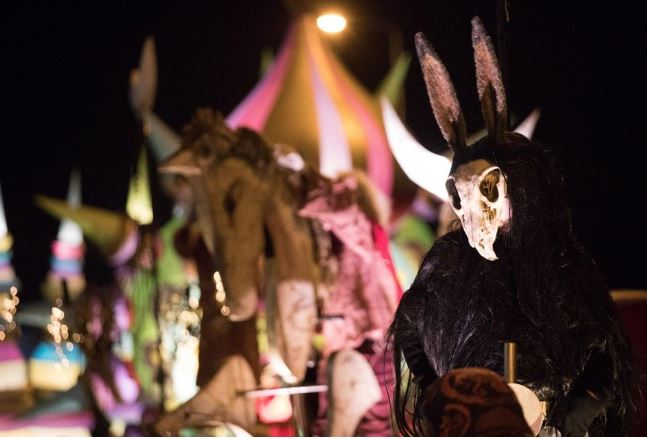
Unveiling the Pooka and Puka: Bridging Language and Mythology
Delve into the enchanting realm of Irish folklore, and you’ll encounter two fascinating and interrelated creatures: the Pooka and the Puka. These mythical beings have captivated the imaginations of generations with their shape-shifting abilities and enigmatic presence. As we explore the rich tapestry of Celtic mythology, we uncover the definition and essence of both the Pooka and the Puka, connecting the ancient tales of Ireland to the contemporary world.
Pooka: Mysterious Shapeshifter of Irish Mythology
The Pooka, also spelled “Púca” in Irish, stands as one of the most prominent figures in Celtic folklore. This mysterious creature is known for its uncanny ability to change its form at will, often appearing as an animal, a spirit, or a mischievous entity. The Pooka is a representation of the liminal space between the ordinary and the supernatural—a guardian of the thinning veil between realms.
In Irish mythology, the Pooka is a complex being, embodying both benevolence and trickery. It might guide travelers to safety, assist farmers in their work, or bestow gifts of luck. Conversely, it can lead travelers astray, play pranks on unsuspecting villagers, or even provoke fear through its unpredictable nature.
The Pooka’s connection to the natural world is evident in its affinity for animals, and it often takes the form of creatures like horses, goats, or hares. It is believed that encountering the Pooka during a misty evening or a moonlit night can lead to transformative experiences or encounters with the supernatural.
Puka: A Mirror Image with a Slight Distinction
While the term “Puka” bears a striking resemblance to “Pooka,” it represents a slight variation in spelling and pronunciation. Both terms share the same core meaning—a mystical and shape-shifting creature of Irish mythology. The Puka, like the Pooka, is known for its ability to take on the forms of various animals and for its association with the natural world.
Though the distinction between “Pooka” and “Puka” is subtle, it’s essential to note that variations in spelling and pronunciation are common in languages and dialects. These differences often emerge due to regional influences and linguistic evolution over time. Despite the minor linguistic shift, the essence of the creature—the elusive, enigmatic, and transformative nature—remains consistent.
Translation from Irish to English: Pooka and Puka
In Irish, “Púca” refers to the mythical creature known as the Pooka or Puka. The term “Púca” translates to “ghost” or “spirit” in English. It carries with it the notion of an otherworldly being that can interact with the living realm in various forms. The term “Pooka” is a common anglicized spelling, and “Puka” is a variant that retains the same essence.
While the exact translation of the term may differ, the concept of the Pooka/Puka transcends linguistic boundaries. Its role as a shape-shifting guardian of the Otherworld’s veil, its capacity for transformation, and its influence on the natural world remain central to its portrayal in both languages.
Bridging Mythology and Language
The Pooka and Puka serve as prime examples of how myths and legends are woven into the fabric of language and culture. These creatures encapsulate the mystery and magic of Irish folklore, offering insights into the beliefs and perspectives of the people who shaped these stories. As we explore the nuanced meanings and variations in names, we connect the past with the present, uncovering the enduring allure of mythical beings that continue to inspire wonder and
The Irish Puka Festival does not have a fixed calendar date, as it is often celebrated around the time of the autumn equinox, which typically falls between September 20th and 23rd each year. The exact date can vary from year to year due to the changing astronomical calendar.
The autumn equinox marks the transition from summer to autumn, and it is a time when day and night are roughly equal in length. In Celtic traditions, this period is often associated with the thinning of the veil between the mortal realm and the Otherworld, making it a fitting time to celebrate mythical beings like the Puka.
Since the Puka Festival is rooted in Celtic folklore and mythology, the timing of its celebration is often aligned with these natural and cultural elements. As such, those interested in attending the festival should keep an eye on local event announcements or official festival websites to determine the exact dates for any given year.
